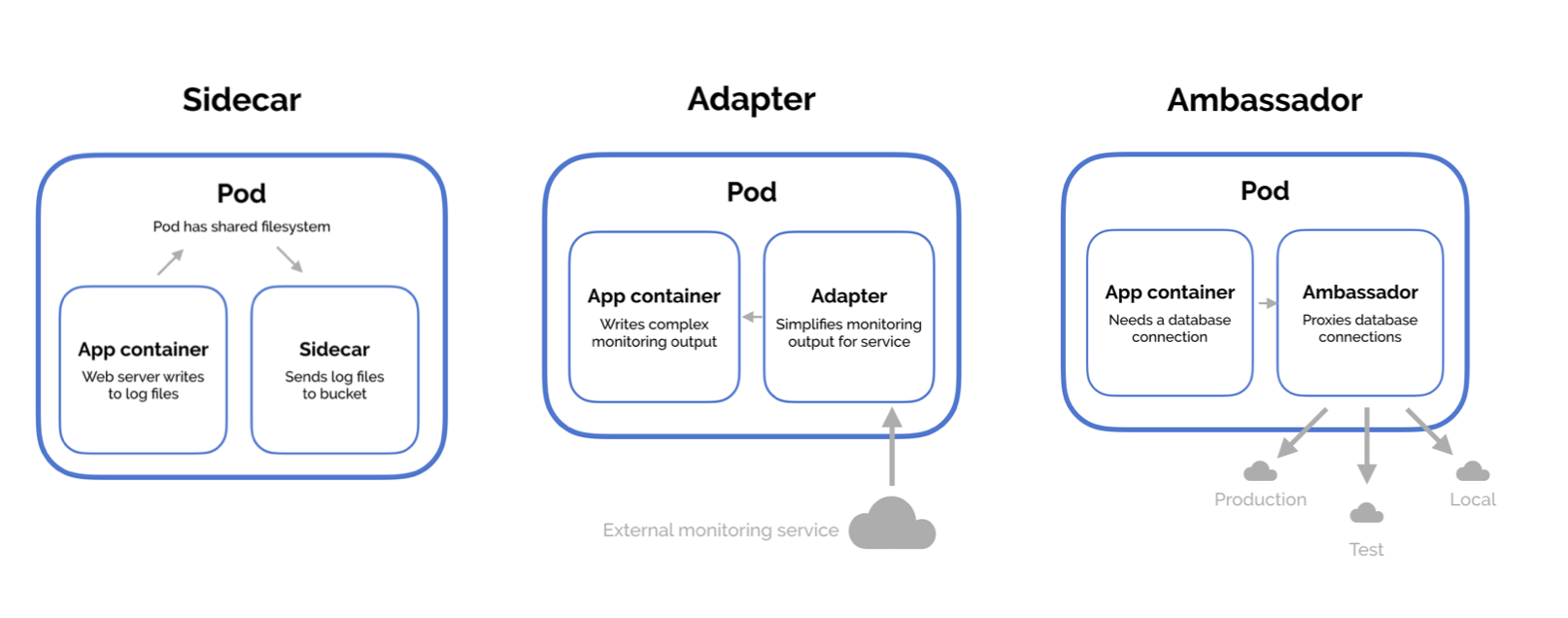4.0 - Multi-Container Pods¶
4.1 - Overview¶
- Multiple patterns are available, such as:
- Ambassador
- Adapter
-
Sidecar
-
In general, it's advised to decouple a monolithic (single-tiered) application into a series of smaller components -> microservices
-
Allows ability to independently develop and deploy sets of small reusable code
-
Allows easier scalability and independent modification.
-
In some cases, may need services to interact with one another, whilst still being identifiable as separate services
- Example: web server and logging agent
-
1 agent service would be required per web server, not merging them together.
-
Only the 2 functionalities (or more) need to work together that can be scaled as required:
-
Multi-container pods required
-
Multi-container pods contain multiple containers running different services, sharing aspects such as:
- Network: Can refer to each other via localhost
- Storage: No need for additional volume setup / integration
-
Lifecycle: Resources are created and destroyed together
-
To create a multi-container pod, add the additional container details to the pod's spec in a similar manner to the following:
apiVersion: v1
kind: Pod
metadata:
name: simple-webapp
labels:
name: simple-webapp
spec:
containers:
- name: simple-webapp
image: simple-webapp
ports:
- containerPort: 8080
- name: log-agent
image: log-agent
Design Patterns¶
- 3 Design patterns available:
- Sidecar
- Adapter
- Ambassador
Sidecar¶
- The most common design pattern
- Uses a "helper" container to assist or improve the functionality of a primary container
- Example: Log agent with a web server
Adapter¶
- Used to assist in standardizing communications between resources
- Processes that transmit data e.g. logs will be formatted in the same manner
- All data stored in centralized location
Ambassador¶
- Responsible for handling proxy for other parts of the system or services
- Used when wanting microservices to interact with one another
- Services to be identified by name only via service discovery such as DNS or at an application level.
- Whilst the design patterns differ, their implementation is the same, adding containers to the pod definition file spec where required,
InitContainers¶
- In multi-container pods, each container is expected to run a process that stays alive for the Pod's lifecycle.
- Sometimes, you may wish to run a process that runs to completion in a pod's container, such as carry out initial configuration or pull some additional code in a one-time task before the main application starts.
- This is achieved through the use of
initContainers.
apiVersion: v1
kind: Pod
metadata:
name: myapp-pod
labels:
app: myapp
spec:
containers:
- name: myapp-container
image: busybox:1.28
command: ['sh', '-c', 'echo The app is running! && sleep 3600']
initContainers:
- name: init-myservice
image: busybox
command: ['sh', '-c', 'git clone <some-repository-that-will-be-used-by-application> ;']
- When the pod's first created, the process in the
initContainermust run to completion before the main container starts. - Multiple
InitContainerscan be configured, however they will run in the sequence defined in their YAML manifest.
